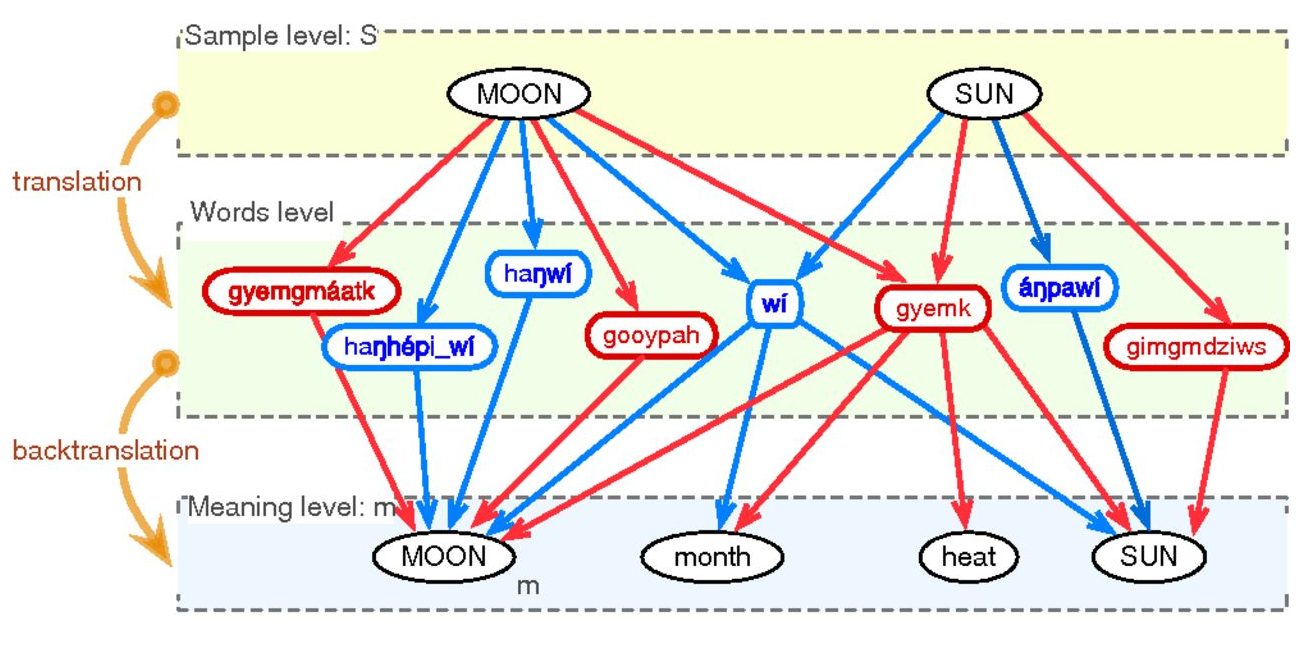-
The Universal Structure of Human Lexical Semantics
May 16, 2016 / Written by: Aaron GronstalA new study explores how properties of organization and cognition in the human brain could be universal. Researchers focused on semantics, or ‘meaning expressed through language,’ and developed an empirical measure of how semantics might reflect cultural, historical, and environmental backgrounds. The results highlight a universal structure underlying the sampled vocabulary across different language groups and largely independent of geography or environment.

Schematic of a bipartite semantic network constructed through translation (first layer to second layer) and back-translation (second layer to third layer) for MOON and SUN in two American languages: Coast Tsimshian (red) and Lakhota (blue).The paper, “On the universal structure of human lexical semantics,” was published in the Proceedings of the National Academy of Sciences (PNAS). The work was supported in part by the NASA Astrobiology Institute (NAI) element of the NASA Astrobiology Program.
Source: [PNAS]
- The NASA Astrobiology Institute Concludes Its 20-year Tenure
- Global Geomorphologic Map of Titan
- Molecular Cousins Discovered on Titan
- Interdisciplinary Consortia for Astrobiology Research (ICAR)
- The NASA Astrobiology Science Forum Talks Now on YouTube
- The NASA Astrobiology Science Forum: The Origin, Evolution, Distribution and Future of Astrobiology
- Alternative Earths
- Drilling for Rock-Powered Life
- Imagining a Living Universe
- Workshops Without Walls: Astrovirology